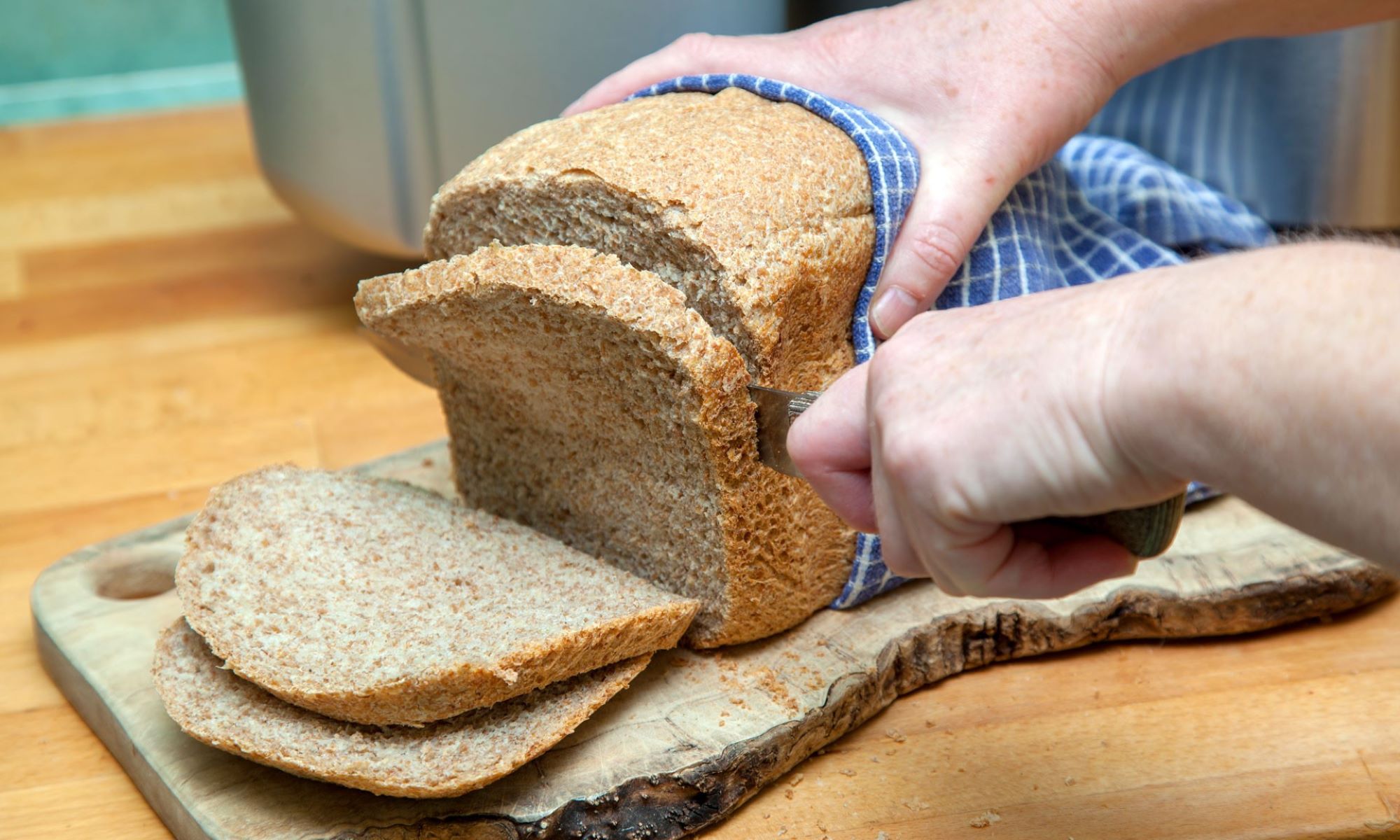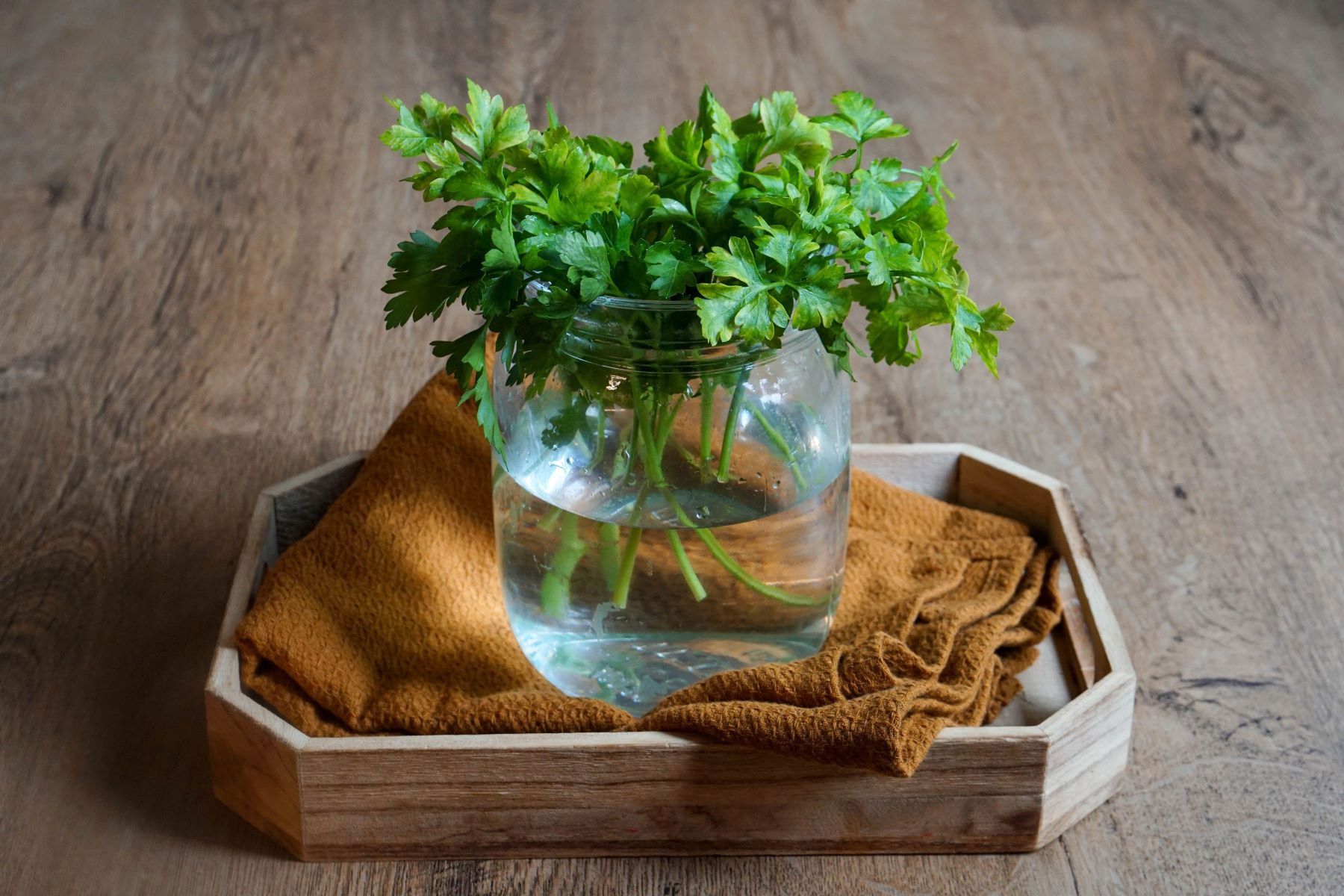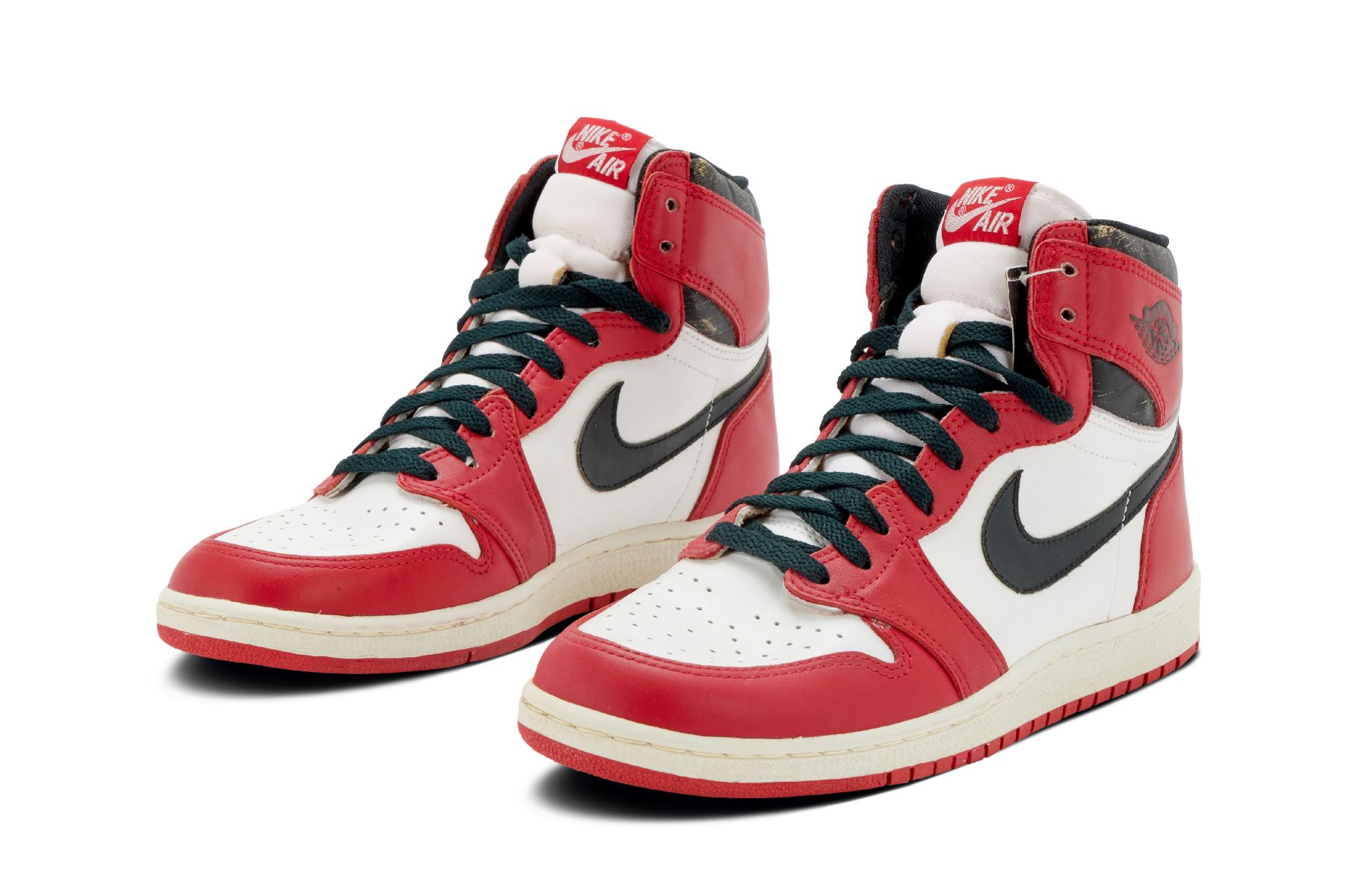Home>Food and Cooking>How To Store Homemade Bread


Food and Cooking
How To Store Homemade Bread
Published: March 6, 2024
Learn the best methods for storing homemade bread to keep it fresh and delicious. Discover expert tips for food storage and cooking.
(Many of the links in this article redirect to a specific reviewed product. Your purchase of these products through affiliate links helps to generate commission for Regretless.com, at no extra cost. Learn more)
Table of Contents
Introduction
Homemade bread, with its tantalizing aroma and fresh, comforting taste, is a culinary delight that brings joy to many households. Whether it's a rustic sourdough loaf, a soft and fluffy brioche, or a hearty whole wheat boule, the art of bread-making is a cherished tradition that yields delectable results. However, once the bread is out of the oven and cooled to perfection, the question arises: how can you store it to maintain its delightful texture and flavor?
Properly storing homemade bread is essential for preserving its quality and ensuring it stays fresh for as long as possible. The right storage methods can prevent the bread from becoming stale or dry, allowing you to savor each slice as if it were freshly baked. In this comprehensive guide, we will explore various techniques for storing homemade bread, from choosing the right containers to utilizing refrigeration and freezing methods. Additionally, we will delve into the benefits of bread boxes and provide valuable tips for extending the shelf life of your beloved loaves.
Join us on this journey to discover the secrets of preserving homemade bread, and elevate your bread storage game to ensure that every slice maintains its irresistible appeal. Let's embark on a flavorful exploration of storage solutions that will keep your homemade bread as fresh and delightful as the moment it emerged from the oven.
Read more: How To Store Banana Bread
Choosing the Right Container
Selecting the appropriate container is a crucial step in preserving the freshness of homemade bread. The ideal container should provide a protective environment that shields the bread from excess air and moisture while maintaining its texture and flavor. Here are some key considerations when choosing the right container:
Material Matters
Opt for containers made of breathable materials such as wood, bamboo, or cotton. These materials allow air to circulate around the bread, preventing moisture buildup that can lead to mold. Avoid plastic containers, as they can trap moisture and create a humid environment, accelerating the staling process.
Size and Fit
Choose a container that comfortably accommodates the size of the bread without leaving excess space. A snug fit helps maintain the bread's shape and prevents it from drying out. Additionally, consider the height of the container to ensure that the bread is not compressed or squished when stored.
Lid Seal
Look for a container with a secure lid that forms a tight seal. This helps prevent air from reaching the bread, preserving its moisture and texture. A well-sealed lid also guards against potential exposure to odors from other foods in the vicinity, ensuring that the bread retains its pure, unadulterated flavor.
Read more: How To Store Radishes
Transparency
Opt for a container with a transparent lid or a clear window, allowing you to easily view the contents without the need to open the container. This feature helps minimize unnecessary exposure to air and light, maintaining the bread's freshness for a longer duration.
Versatility
Consider the versatility of the container. Look for options that can be used for both storage and serving, eliminating the need to transfer the bread to a separate dish when it's time to enjoy a delightful slice.
By carefully considering these factors when selecting a container for your homemade bread, you can ensure that your loaves remain fresh, flavorful, and ready to be savored at any moment. The right container serves as a protective shield, preserving the artisanal quality of your homemade bread and allowing you to indulge in its deliciousness whenever the craving strikes.
Wrapping and Sealing Techniques
Properly wrapping and sealing homemade bread is a fundamental aspect of preserving its freshness and flavor. The right techniques can effectively shield the bread from air and moisture, preventing it from becoming stale or dry. Here are essential methods for wrapping and sealing homemade bread:
Parchment Paper and Plastic Wrap
Begin by allowing the freshly baked bread to cool completely. Once cooled, wrap the bread tightly in parchment paper, which provides a breathable yet protective layer. Next, wrap the parchment-wrapped bread in a layer of plastic wrap, ensuring a snug and secure seal. This dual-layer approach helps maintain the bread's moisture while preventing it from absorbing excess moisture from the surrounding environment.
Read more: How To Warm Up Pita Bread
Aluminum Foil
Alternatively, aluminum foil can be used to wrap homemade bread. After the bread has cooled, tightly wrap it in a layer of aluminum foil, ensuring that the entire loaf is securely covered. The foil acts as a barrier against air and light, safeguarding the bread's texture and flavor. This method is particularly effective for storing bread in the refrigerator, as it provides an additional layer of protection against potential odors.
Bread Bags
Specialized bread bags, designed with breathable materials, offer an excellent storage solution for homemade loaves. Place the cooled bread in a bread bag and gently press out excess air before sealing the bag. The breathable nature of these bags allows air to circulate while preventing the bread from drying out. Additionally, some bread bags feature resealable closures, providing convenient access to the bread while maintaining its freshness.
Beeswax Wraps
For an eco-friendly and reusable option, consider using beeswax wraps to encase homemade bread. These wraps, made from cotton infused with beeswax, resin, and jojoba oil, create a breathable yet protective covering for the bread. The warmth from your hands softens the beeswax, allowing it to conform to the bread's shape and form a secure seal. Beeswax wraps are an environmentally conscious choice that effectively preserves the freshness of homemade bread.
By employing these wrapping and sealing techniques, you can ensure that your homemade bread remains delectably fresh, allowing you to savor each slice with the same delightful taste and texture as when it first emerged from the oven. Whether utilizing parchment paper and plastic wrap, aluminum foil, bread bags, or beeswax wraps, the right wrapping and sealing methods play a vital role in maintaining the artisanal quality of your beloved loaves.
Refrigerating Homemade Bread
Refrigerating homemade bread can be a contentious topic in the culinary world. While refrigeration is often associated with preserving food, it can have varying effects on the texture and flavor of bread. When it comes to homemade bread, the decision to refrigerate should be approached with careful consideration.
Refrigeration can extend the shelf life of bread, particularly in warmer climates where room temperature storage may lead to quicker spoilage. However, it's essential to employ the right techniques to minimize potential drawbacks. When refrigerating homemade bread, the key lies in proper wrapping and temperature management.
Before refrigerating, ensure that the bread has cooled completely to room temperature. Once cooled, wrap the bread securely in a double layer of plastic wrap or aluminum foil to protect it from absorbing moisture and odors from the refrigerator. It's crucial to seal the bread effectively to maintain its moisture and prevent it from becoming stale.
When storing bread in the refrigerator, it's advisable to place it in the least humid section, such as the main body of the refrigerator rather than the door. This helps minimize exposure to temperature fluctuations and moisture, which can compromise the bread's texture. Additionally, storing bread away from strong-smelling foods can prevent it from absorbing unwanted odors.
While refrigeration can prolong the shelf life of homemade bread, it's important to note that it can expedite the staling process. The cold temperature can cause the starch in the bread to retrograde more quickly, leading to a firmer texture. To mitigate this, allow the refrigerated bread to come to room temperature before consuming. If desired, gently warm the bread in the oven to restore its original texture and revive its delightful aroma.
Ultimately, refrigerating homemade bread can be a viable option for extending its freshness, especially when faced with the need for prolonged storage. By employing proper wrapping techniques and strategic placement within the refrigerator, you can effectively preserve the quality of your homemade loaves. However, it's essential to be mindful of the potential impact on texture and flavor, and to employ additional steps to restore the bread to its optimal state before enjoying it.
Read more: How To Heat French Bread
Freezing Homemade Bread
Freezing homemade bread is a highly effective method for extending its shelf life while preserving its delightful taste and texture. Whether you've baked an abundance of loaves or simply want to stock up for future enjoyment, freezing provides a convenient solution for maintaining the freshness of homemade bread.
To freeze homemade bread, begin by ensuring that the loaves are thoroughly cooled to room temperature. Once cooled, it's essential to wrap the bread securely to protect it from freezer burn and maintain its moisture. There are several recommended approaches for freezing homemade bread, each offering reliable preservation and ease of use.
One popular method involves double-wrapping the bread in a combination of plastic wrap and aluminum foil. Start by tightly wrapping the cooled bread in a layer of plastic wrap, ensuring a snug and secure seal. Next, wrap the plastic-wrapped bread in a layer of aluminum foil, providing an additional barrier against freezer burn. This dual-layer approach effectively shields the bread from excess air and moisture, preserving its quality during freezing.
Alternatively, utilizing resealable freezer bags offers a convenient and space-efficient freezing solution. Place the cooled bread in a freezer bag, gently pressing out excess air before sealing the bag. The airtight seal of the freezer bag helps protect the bread from freezer burn while occupying minimal space in the freezer, allowing for efficient storage of multiple loaves.
For those seeking an eco-friendly and reusable option, consider using airtight containers suitable for freezing. These containers provide a protective environment for the bread, preventing exposure to air and moisture while offering the convenience of easy stacking in the freezer. When using containers, ensure that they are specifically designed for freezer use to maintain the bread's freshness effectively.
Once the homemade bread is securely wrapped or packaged, label each item with the date of freezing to track its freshness. Proper labeling allows for easy identification and ensures that the oldest loaves are used first, maintaining a rotation that aligns with optimal quality.
By employing these freezing methods, you can confidently stockpile your homemade bread, knowing that each loaf will retain its delectable flavor and texture when thawed. Whether utilizing plastic wrap and aluminum foil, resealable freezer bags, or airtight containers, freezing homemade bread offers a convenient and reliable means of preserving its artisanal quality for future enjoyment.
Storing Bread in a Bread Box
Storing bread in a bread box is a time-honored tradition that offers a charming and practical solution for preserving the freshness of homemade loaves. The bread box, with its classic design and functional appeal, provides an ideal environment for storing bread, shielding it from excess air and light while maintaining its delightful texture and flavor.
The primary benefit of using a bread box lies in its ability to create a microclimate that is conducive to preserving bread. The enclosed space of the bread box helps regulate the moisture surrounding the bread, preventing it from drying out too quickly or becoming overly moist. This controlled environment is particularly advantageous for artisanal loaves, as it allows them to retain their crusty exterior and soft interior without succumbing to rapid staling.
When selecting a bread box, consider options made from breathable materials such as wood or bamboo. These materials allow air to circulate within the box, preventing moisture buildup that can lead to mold. Additionally, choose a bread box with a secure lid that forms a tight seal, effectively protecting the bread from exposure to air and light. The lid serves as a protective barrier, preserving the bread's moisture and flavor while safeguarding it from potential odors in the surrounding environment.
Proper placement of the bread box is essential for maintaining the bread's freshness. Position the bread box in a cool, dry area away from direct sunlight and heat sources. This helps prevent the bread from being subjected to temperature fluctuations that can compromise its texture and flavor. Additionally, storing the bread box in a well-ventilated space ensures that air can circulate around the bread, contributing to its longevity.
When placing the bread in the box, ensure that it is adequately cooled to room temperature to prevent condensation from forming inside the box. If the bread has been wrapped in parchment paper or beeswax wraps, these breathable coverings can further aid in maintaining the bread's quality within the bread box. The bread box serves as a protective haven, allowing the loaves to rest comfortably while retaining their artisanal appeal.
By utilizing a bread box for storing homemade bread, you can embrace a traditional and effective method of preservation that adds a touch of nostalgia to your kitchen. The bread box not only serves as a functional storage solution but also contributes to the aesthetic charm of your culinary space. With its ability to create an optimal microclimate for bread storage, the bread box stands as a timeless ally in the quest to savor each slice of homemade bread at its freshest and most delightful state.
Tips for Keeping Homemade Bread Fresh
-
Store bread at room temperature: Keep your homemade bread at room temperature in a cool, dry place to maintain its texture and flavor. Avoid exposing it to direct sunlight or heat sources, as these can accelerate the staling process.
-
Use breathable coverings: When wrapping your bread for storage, opt for breathable materials such as parchment paper, beeswax wraps, or specialized bread bags. These coverings allow air to circulate around the bread, preventing moisture buildup and mold formation.
-
Avoid plastic bags: Refrain from storing homemade bread in plastic bags, as they can trap moisture and create a humid environment, leading to faster staleness and potential mold growth.
-
Slice as needed: To preserve the freshness of the entire loaf, consider slicing the bread only as needed. This helps minimize exposure to air and maintains the integrity of the remaining loaf.
-
Refresh with heat: If your bread begins to lose its freshness, consider refreshing it by gently warming it in the oven. This can help revive its delightful aroma and restore its original texture.
-
Consume within a few days: While homemade bread can be stored using various methods, it is best enjoyed within a few days of baking for optimal freshness. Embrace the pleasure of savoring your delectable loaves while they are at their peak.
-
Avoid excess handling: Minimize handling of the bread to prevent unnecessary exposure to air and moisture. When accessing the bread for consumption, handle it with care to maintain its quality.
-
Rotate storage: If you have multiple loaves of homemade bread, rotate their storage to ensure that each loaf is used in a timely manner. This practice helps maintain a fresh supply of bread while preventing any loaves from being overlooked.
-
Consider a bread box: Investing in a quality bread box can provide an ideal storage solution for preserving homemade bread. The bread box creates a controlled microclimate that protects the bread from rapid staling and excess moisture.
-
Embrace experimentation: Explore different storage methods and techniques to find the approach that best suits your preferences and environment. Each bread recipe and baking environment may benefit from unique storage considerations.
By incorporating these tips into your bread storage routine, you can elevate the longevity and enjoyment of your homemade loaves. With mindful storage practices, you can savor the delightful taste and texture of your bread, ensuring that each slice remains a testament to your artisanal baking prowess.












